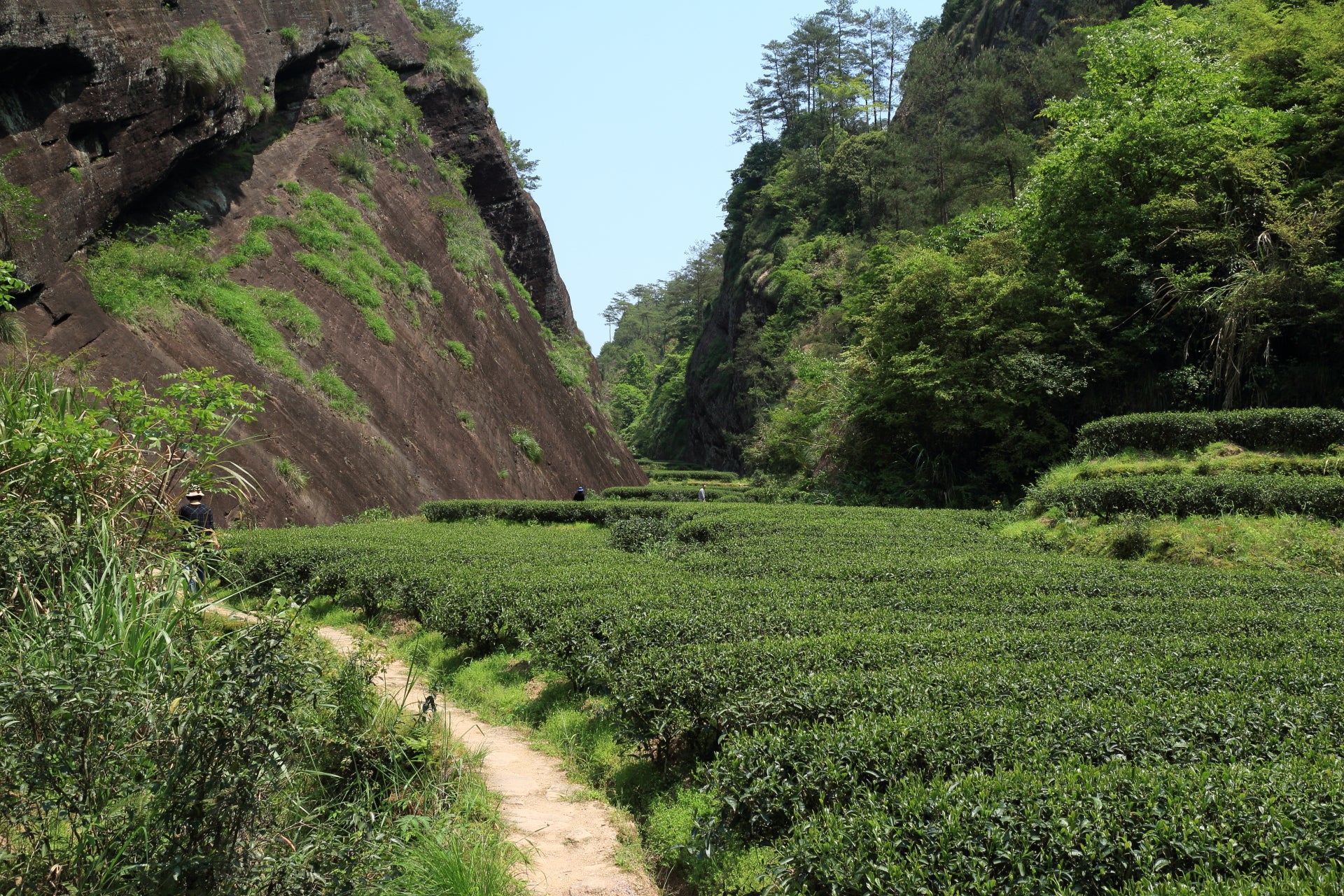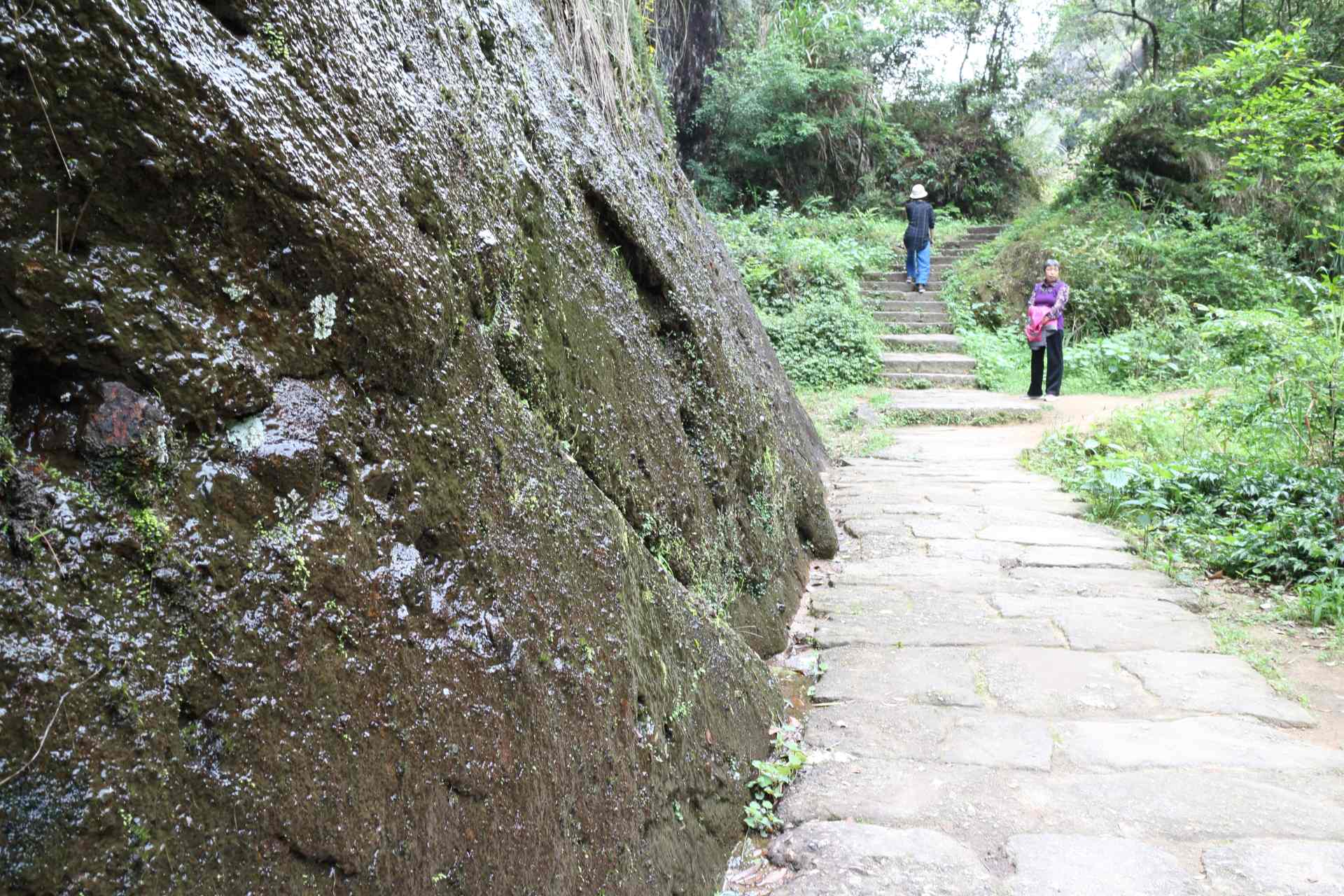Bai Rui Xiang
Manche Tees bestechen durch ein umwerfendes Aroma, andere überzeugen durch einen herausragenden Geschmack. Dieser Yancha gehört jedoch wohl zu einer dritten Variante: zu den Tees, deren bemerkenswerteste Eigenschaft ihre Textur ist. Das soll nicht heißen, dass es ihm an Geschmack mangelt, denn er hat in der Tat die reiche, zungenbetäubende Süße von braunem Zucker. Doch diese köstliche Melasse spiegelt sich in seinem Mundgefühl wider, das sich um die Zunge zu winden scheint und den Gaumen mit einer leichten Adstringenz bestreicht, bevor er die Kehle hinunterrutscht. Sein Yan Yun weht dann mit der Fruchtigkeit von saftiger Litschi heran, während die Röstung den Charakter von frischer Haselnuss annimmt. Irgendwie cremig, saftig, sirupartig und fast kaubar, seine taktilen Empfindungen bieten ebenso einen Höhenflug wie seine exquisiten Aromen.
- HERKUNFT: Lianhua Feng, Wuyishan, Nanping, Fujian, China
- WAS DER NAME BEDEUTET: Hundert glückverheißende Düfte (bái rǔi xiāng)
- ZÜCHTUNG: Weiße Daphne
- GEERNTET AM: 28. April 2020
- GESCHMACK: Brauner Zucker, Lychee, Haselnuss
- RÖSTUNG: Dreifach (zuletzt am 3. November 2020)
- Menge: 6g / 500ml
- Wassertemperatur: 90°C
- Ziehzeit: 5 Min.
- Menge: 3g / 100ml
- Wassertemperatur: 90°C
- 4 Aufgüsse: 45, 45, 60, 90 Sek.
Die besten Ergebnisse beim Gongfu Cha erzielen Sie, wenn Sie ihn in einem traditionellen Gaiwan oder in einer Yixing-Teekanne aufbrühen. Eine zu hohe Wassertemperatur würde die Blätter verbrennen und zu einem bitteren Geschmack führen.
Zusätzliche Informationen
Authentic Wuyi Yan Cha is produced in the Mount Wuyi region, a UNESCO natural heritage site. The dramatic gorges of the Nine Bend River are surrounded by a largely intact subtropical forest and smooth cliffs of black-brownish rocks. The tea plants grow in narrow valleys next to the cliffs in a mineral-rich soil.
Today Wuyi Yan Cha is one of the most valued teas in China. Because it has become a status symbol, many wealthy Chinese are willing to pay a fortune for it without even knowing how a proper Wuyi Yan Cha should taste. The result has been prices inflating to unjustified levels and quality often sacrificed for quantity.
Unique to the Wuyi Yan Cha is a mineral savor coming from the soil and the surrounding cliffs. Being the oolong with the highest fire finish, fresh Yan Cha may as a result be strong and pungent. Sharpness and too-prominent astringency subside upon ageing. Premium high-fire Yan Cha tastes better after a few years of storage. Use a Yixing teapot to soften the tea, should it be too astringent for your palate.
The overall taste profile is rich, complex, and deep. Depending on cultivar and environment, the mineral-roasted flavor is refined by floral, fruity, nutty, or woody accents.










